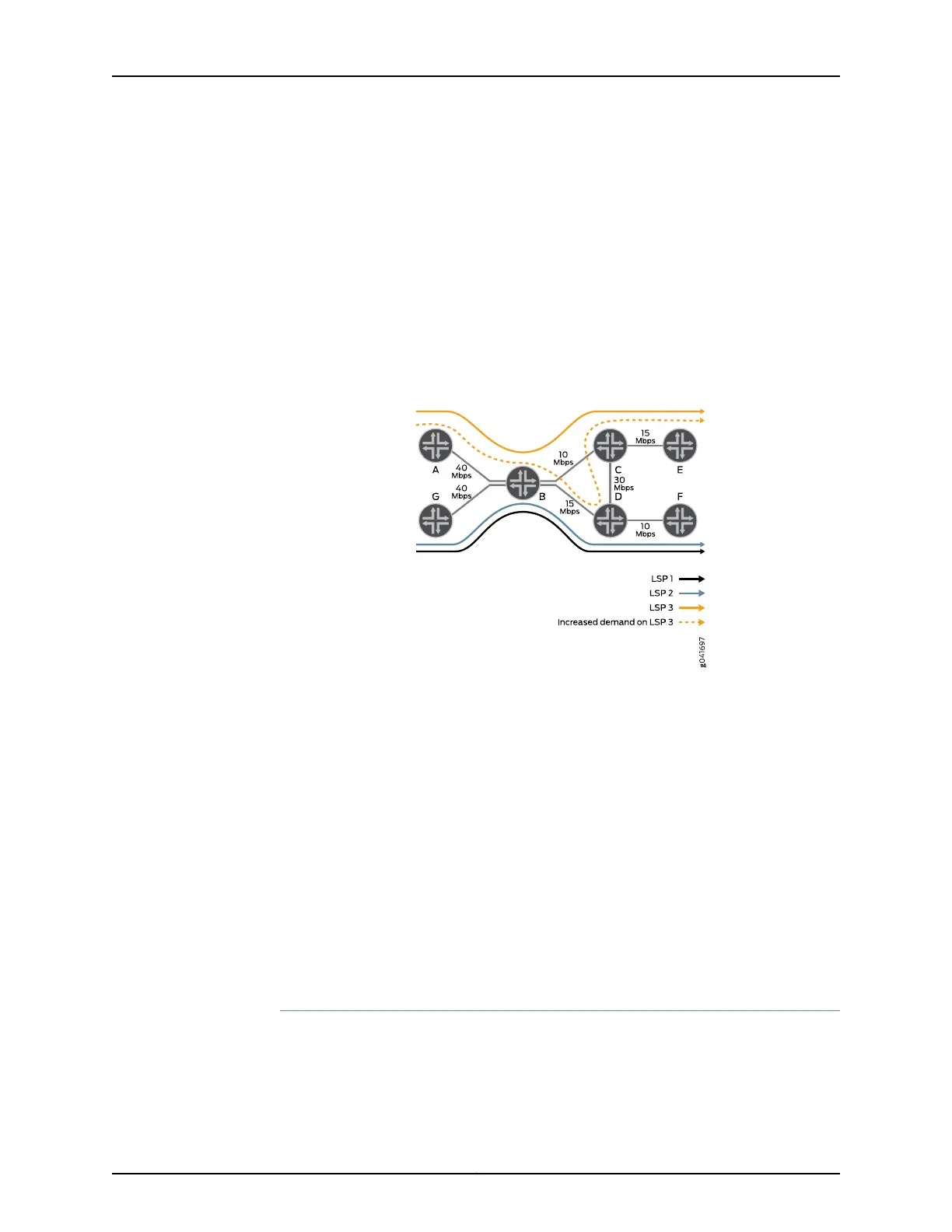demands based on the order of arrival. Because the ingress routers do not have a global
view of the bandwidth demand on the network, using the order of preference to
establish LSPs can cause traffic to be dropped or LSPs not being established at all
when there is an excess of bandwidth demand.
As an example, Figure 37 on page 695 is configured with MPLS RSVP-TE, in which A and
G are the label edge routers (LERs). These ingress routers establish LSPs independently
based on the order of demands and have no knowledge or control over each other’s LSPs.
Routers B, C, and D are intermediate or transit routers that connect to the egress routers
E and F.
Figure 37: Example MPLS Traffic Engineering
The ingress routers establish LSPs based on the order in which the demands arrive. If
Router G receives two demands of capacity 5 each for G-F, then G signals two LSPs –
LSP1 and LSP2 – through G-B-D-F. In the same way, when Router A receives the third
demand of capacity 10 for A-E, then it signals an LSP, LSP3, through A-B-C-E. However,
if the demand on the A-E LSP increases from 10 to 15, Router A cannot signal LSP3 using
the same (A-B-C-E) path, because the B-C link has a lower capacity.
Router A should have signaled the increased demand on LSP3 using the A-B-D-C-E path.
Since LSP1 and LSP2 have utilized the B-D link based on the order of demands received,
LSP3 is not signaled.
Thus, although adequate max-flow bandwidth is available for all the LSPs, LSP3 is subject
to potentially prolonged service degradation. This is due to Router A’s lack of global
demand visibility and the lack of systemic coordination in demand placement by the
ingress routers A and G.
Use of an External Path Computing Entity
As a solution to the current limitations found in the MPLS RSVP-TE path computation,
an external path computing entity with a global view of per-LSP, per-device demand in
the network independent of available capacity is required.
695Copyright © 2017, Juniper Networks, Inc.
Chapter 23: Configuring Path Computation Element Protocol (PCEP)

